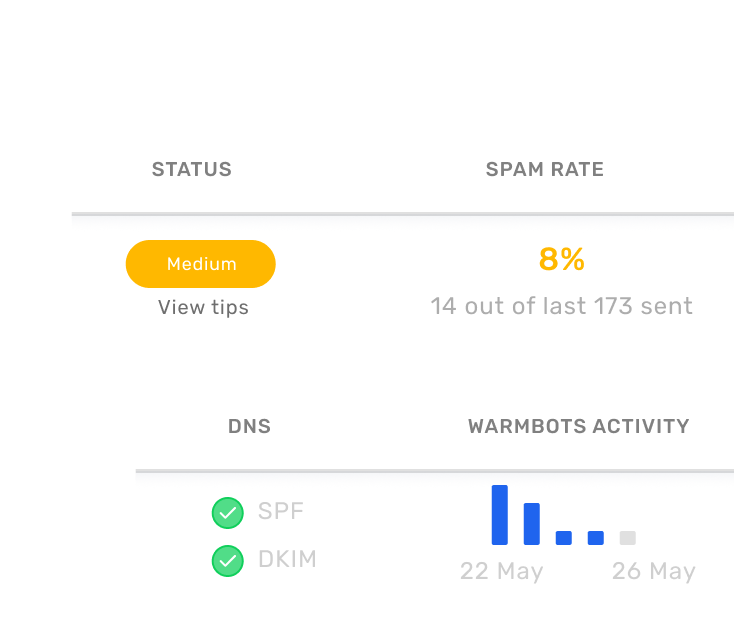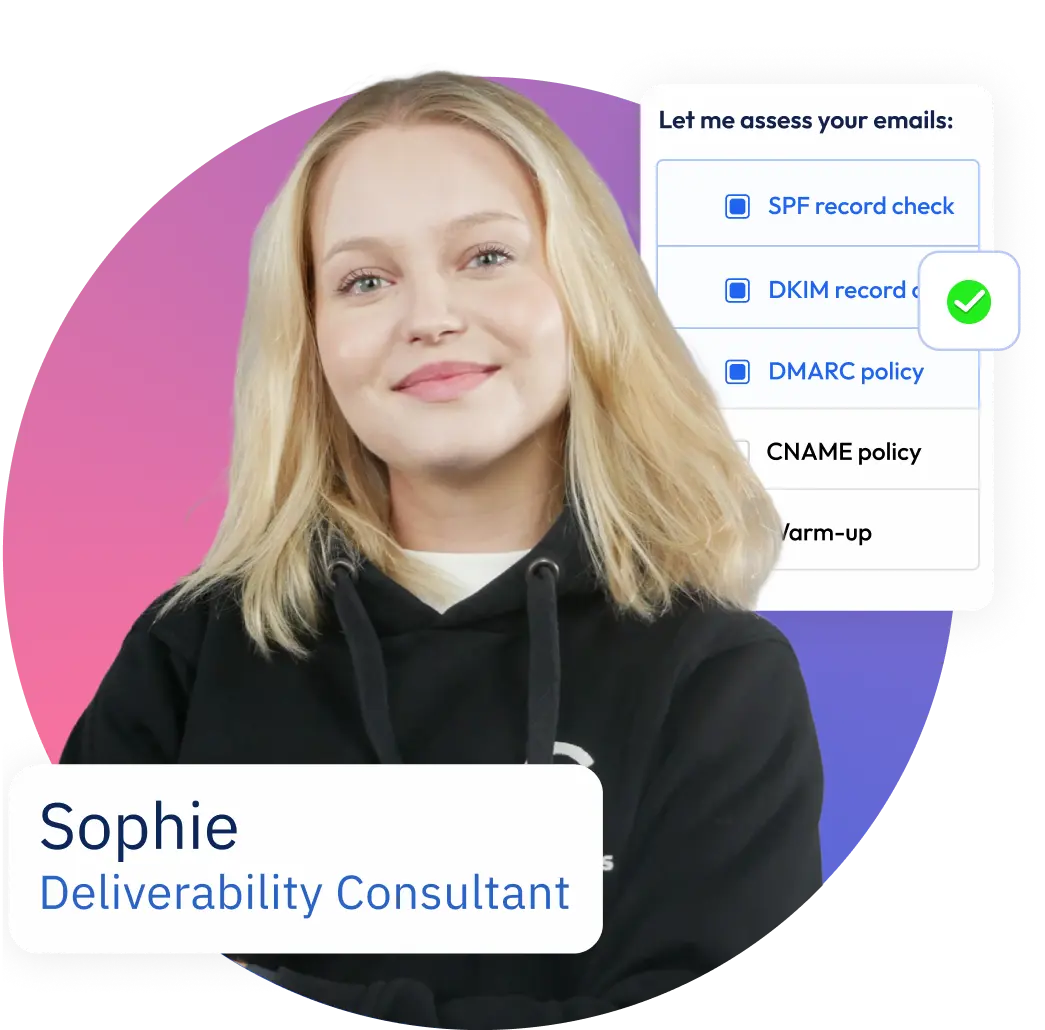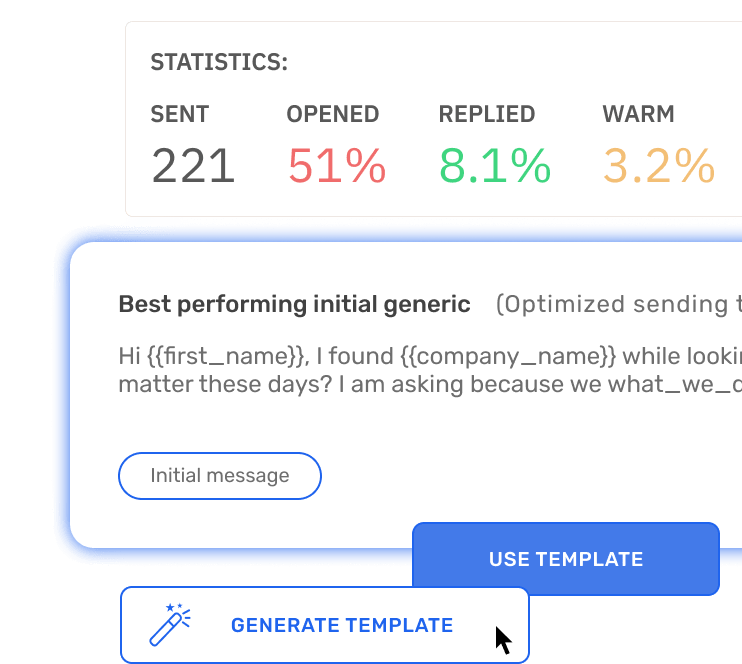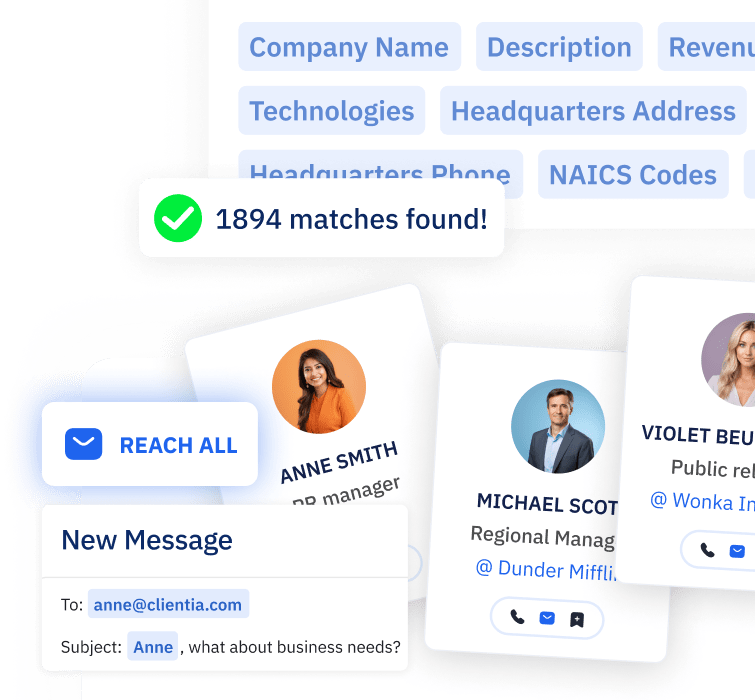Just sit and think about one thing. Imagine working so hard and crafting your outreach campaign. You have ensured everything is perfect. In fact, you have even exceeded yourself: built the right experience and asked the right questions.
So far, so good.
So, how come your emails actually end up in the recipient’s spam folder? So unfair! Can you relate to this?
Hate to break it to ya! There’s a lot of innovative software and spam filters on constant watch to protect people from unwelcome spam emails. While they do good work of keeping spammers and phishing ventures at arm’s length, they also send good-natured, positive sales emails to their cold grave – the junk folder.
This is painful, especially when you know your outreach email is relevant to your audience and you can bring value to their business.
But fear not, this article will teach you what triggers spam filters and share our tested tips on how to avoid an email going to spam.
Warm-Up for Predictable Outcomes
Reach Inboxes, Not Spam Folders
- NO Cost for 3 Inboxes
- Monitoring
- For all email providers
- Deliverability Testing
your email setup check
Be compliant with the newest Google & Yahoo regulations
- SPF Record CHECk & setup
- DKIM Record Check & Setup
- DMARC Policy Setup
- Creating a new custom domain
What is an email spam filter
Let’s cut to the chase. What exactly are email spam traps? Also known as honeypots, these are tools, solutions, and methods that are able to detect and identify any unwanted, unsolicited, and virus-infected spam email and send it to spam folders (or even worse).
These solutions aim to prevent those emails from getting into inboxes. These spam filters are used by different email providers to protect different types of businesses. The thing is that spam filters are applied to both inbound and outbound emails, meaning your email campaign can be affected too.
How does the spam filter work
The principle of work of spam filters may easily baffle people. Let’s put it simply. There are thousands of algorithms that each email is subjected to. According to each of those algorithms, the email gets a certain spam score, due to which email providers decide whether it lands in the inbox, is flagged as spam, or is just blocked.
To be completely ready for any scenario, you should bare in mind that these spam filters focus on various criteria:
- rules-based filters
- blocklist filters
- content filters
- header filters
Being fully armored in the face of spam filters, you should also take into account that there are different types of email providers. For this reason, it is crucial to not only learn how to avoid spam filters and spam triggering words and other spam-related traps, but also how to test your emails, email addresses, and email deliverability so you can go around getting into junk folders.
Now that you know how spam filters work, let’s discuss two most popular reasons why your emails might trigger email filters.
Two reasons your outreach emails can end up in the spam folder
1. Flagged by the spam filters
Various tools like SpamAssassin are tailored to search for certain criteria in email messages, and if the message reaches a certain threshold, it’s flagged as spam. Here are sample criteria used by SpamAssassin:
- Talks about lots of money (.193 points)
- Describes some sort of breakthrough (.232 points)
- Looks like a mortgage pitch (.297 points)
- Contains an urgent matter (.288 points)
- Money back guarantee (2.051 points)
However, it is not only about the content, as there are other factors that may impact it. For example, you haven’t been careful enough, and someone’s already flagged the email sent from your IP address as a spam trap hit, so your IP reputation and, in general, good sender reputation have been damaged.
Avoiding spam filters in your email campaign is a must. To enhance your outbound email game and gain the trust of email providers, pay close attention to such aspects as:
- daily sending volume
- replied and sent ratios
- valid DNS configuration.
2. Recipients mark your message as spam
If the reader happens to identify your email as intrusive and irrelevant, that mark as spam button will be engaged for sure. If you get enough of those spam complaints, you may end up on the block list. Another setback is that you may be suspended from sending any emails for 24 hours or until being manually unblocked (by an IT administrator, or yourself).
Lucky for you, we’ve compiled all the technical aspects of creating and sending outreach emails so you can figure out how to get around spam filters across different email providers.
How To Avoid Spam Filter And A Spammy Experience
1. Comply with the spam laws
When you send an electronic mail message, by default, you need to abide by the privacy and anti-spam laws of your country. Here you can find a detailed post on “is cold emailing illegal” and how CAN-SPAM ACT (for the USA) and CASL (for Canada) apply to sales outreach and cold emails. One more way to comply with laws is to have a phone number, physical address, or an option of an unsubscribe link. It makes emails more personified.
2. Use one of the reliable email service providers
Selecting the right Email Service Provider (ESP) plays a pivotal role in safeguarding your cold emails from being relegated to spam folders. Reputable email service providers usually have a proven track record of good deliverability and ensure compliance with the industry standards. This reduces the likelihood of your emails triggering spam filters and enhances their chances of landing in recipients’ primary inboxes.
3. Regularly check your IP reputation
Checking blacklists regularly can help you avoid spam filters, especially if you’ve been having trouble with emails bouncing back or your email campaigns are not doing well. Such situations might mean that your IP address is on a blocklist. You can check if that is true by using a service like Spamhaus that lists blocked email addresses. There are also other tools like Mailgenius, GlockApps, and MXToolbox that can help you figure out if your emails are being delivered properly. We write more about this topic in our “How to Test Email Deliverability Before You Click Send” article.
Reach More with Less Effort
Connect with Potential Clients at scale
- AI message generator
- E-mail verification
- Multichannel sequences
- A/B testing
4. Shoot for relevancy – segment your lists and campaigns
There are a few tricks not to end up in a spam folder. Targeting the proper people (or should we write: email addresses), asking the right questions, and providing something of value in your email campaigns make a great deal of difference. We are talking about the distinction between outreach emails that receive positive responses vs. the ones that land in the trash or, even worse, and they may get to the junk folder.
Using advanced sales and marketing automation tools make building an email list, segmentation, email lists formation, and targeting really easy. We don’t have an excuse not to separate all the email campaigns. Create separate email lists with proper email addresses. A good approach to get going on this is to consider your Ideal Customer Profiles and then tailor your emails according to each ICP’s needs. So if you are wondering about how to avoid email spam filters, building an email list with valid addresses is one of the most important actions that you can take which will help you prevent just that.
Building an email list with verified contacts is easy with Growbots, you can read more about it on our page dedicated to prospecting.
You can also check out: tips on how to verify your email list
5. Personalize the right way
It is natural that people hate spam, so obviously, they are hesitant to open emails from unfamiliar senders. This is the reason why the subject line you use for your email campaign is crucial. Especially if besides avoiding spam, you want to increase your open rates.
You can, and you should keep using as much personalization as possible. Personalized subject lines are a must in this matter. If your email subject lines will be personalized, it will definitely do the trick! It is also a nice touch both for handling deliverability and increasing results.
Simply inserting someone’s {first name} in a subject line is not enough. Email recipients are no longer fascinated by that embellished functionality as they did in the past.
Instead, compose your email in the same way you’d talk to them if they were in front of you. As personalized and relevant as possible!
Looking for inspiration for a subject line for your next campaign? Check out this article: 38 Effective Cold Email Opening Lines You Should Steal
6. Identify yourself
This is a piece of cake. Make sure you add the physical address of your organization in the signature of the email. It really helps you build confidence, proves that you represent a legit business, and brings you one step closer to compliance with anti-spam laws. You could also consider having a phone number in the signature and an email profile picture. It can further increase results across all email clients and decrease spam rates.
See also “Stop Emailing Me!” – How to Deal With Cold Email Rejection
7. Monitor your sender reputation
The best way to monitor and maintain your sender’s good reputation is to connect to Warmbots, which sends messages in a network of real inboxes monitoring whether you land in others’ spam and rebuilding your email sender reputation at the same time across all email clients.
8. Use email warm-up software constantly!
Email warm-up software is a great way to prepare an email for cold email campaigns or a solution for spam issues that already exist. However, keeping on using a warm-up tool such as Warmbots during email outreach can be beneficial as it keeps your email replied to an email sent ratio higher and can alert and rectify any spam issues that are a part of every outbound struggle at a certain point in time.
Warmbots is a tool that can test and improve your email deliverability. How does it work, you may ask? First, you connect your inbox to the tool. Its artificial intelligence starts engaging with automated emails and increases email deliverability while testing those emails whether they land straight to the receiver’s inbox or not.
To sum up, warming up your account will not only help you avoid spam filters but also increase your IP reputation. Remember that different email providers have different email warm up rules so make sure to do your research before you sign up to a specific tool.
9. Keep your daily sendings consistent
No real user can not send anything for a few weeks and then send out 1000 emails daily for a week, right?
This is why you need to be strategic when you send emails. When starting email campaigns, always try to start sending with a low volume, such as 30 emails per day, and ramp it up weekly with increments of up to 20 more, each week. However, keep in mind keeping the final limit on a sensible level which usually means not going higher than 150 messages a day per email account.
Avoid sudden email spikes and unexpected breaks during outreach (not sending during a national holiday is rather expected than penalized).
Seek, pick, and reach
Connect with your potential customers
- 180m+ contacts
- Advanced filtering
- Multichannel sequences
- CRM integrations
10. Take care of your technical setup
It’s important to have SPF, DKIM, and DMARC configured for your email domain before you start sending cold emails. While they’re not the magical solution to all spam problems, the lack of them can significantly hurt email domain reputation leading to spam issues. You should consider this, taking into account the domain age, which also has a significant influence on the spam rate of google receivers.
11. Email open tracking - only if needed
Open tracking is a great way to monitor campaign performance and can alert you of spam issues; however, some receivers can penalize open tracking software and send your message to spam. While it’s not happening each time, you still should be wary of this, especially if you want to minimize your spam risk as much as possible. Configuring a CNAME to mask your tracking links behind your domain is also a great way to lower the risk by making tracking software look less suspicious for both the spam blocker and the receiver. Important remark – use it only when you really need it. As it also increases the spam risk, its application should be reasonable.
12. Keep formatting simple. No CAPS!
Spammers are well-known for hiding text in emails using tiny font sizes or for using huge font sizes in their offers. So, when you use fonts that are too big, too small, or irregular, you’ll fail to avoid spam trigger words and set off spam blockers. Try to keep the formatting of your email content as simple as possible using an Arial (or any other legible) font type at 11-point.
13. Watch out for punctuation, symbols, typos, and grammar
Honeypots tend to look for anything that seems to be out of place. For example, blank lines, adding extra spaces between words or subject lines, repeating the same phrases all over the email, and poor grammar (yes, it does matter) can add up to your spam score.
14. One font, type, and color
Just like simplicity (#1), consistency is your friend. We all copy bits and pieces of our emails from time to time. If you’re copying some text from a sales template, make sure to first paste without formatting and then ensure your font type, size, and color are the same everywhere. The rest of these set off spam blockers in a different way. They should absolutely be avoided.
15. Absolutely no invisible text
In plain language, such an action is used to sneak some hidden elements past the recipient. Don’t trick your reader!
16. Avoid trigger words
Different spammy words like Best price, Viagra, 100%, Free…, Additional income, Double your…, and Cash… start out spam filters. Especially those used in subject lines.
17. No forms, attachments, or rich content
These can be applied as an invitation for various viruses and are caught by the spam trap in most cases.
18. Text to link ratio
Spam inclines toward linking to things that would normally be trapped by that or another filter. Keep in mind that lots of links with no text to back them up will set off the filter.
19. Text to image ratio and image size
Spam can even use pictures of text to state a point that would normally be caught by the filter. For that reason, the filter is suspicious of a lot of images without much text.
Final thoughts
Provided your cold email/outreach email is relevant to the recipients and follows these guidelines, you’ve improved your chances of avoiding email spam filters.
Ultimately your best email deliverability results will come when you work within the constraints set by spam blockers, not by trying to fight against them.
Now that you know how to play within boundaries set by spam filters check out this complete guide on how to create a non-spammy experience and the legal aspects you should consider when making your sales outreach email.

Charlie Galan
Product Owner at Growbots


























